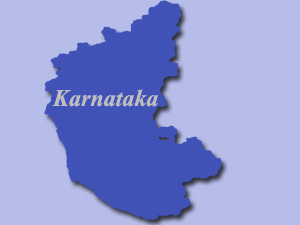Chitradurga grasslands illegally diverted

The recent case is that of grasslands in Chitradurga district where 10,000 acres has been illegally diverted for various urban, industrial, infrastructure development, research and defence related projects.
The grassland comes under three villages' survey numbers, namely - Ullarti kaval, Khudapura and Varavu kaval. However, its impact will be on 60 villages who use these grasslands.
The decision was taken with no consultation with Panchayats and Nagarpalikas - constitutionally empowered local bodies. Furthermore, there was no consultation with the Biodiversity Management Committee constituted per the Biological Diversity Act, 2002.
In Bangalore, residents of Dodda Ullarti kaval village spoke about the impact such diversion is having on their livelihoods.
Historical significance:
The grasslands (kavals) hold significance because it is a grazing ground for a native breed of cattle, Amrithmahal. For around 500 years, these grasslands were protected for the grazing of this breed of cattle. Since, these cattle cannot be reared like domesticated cattle.
To ensure purity of the breed, government owned all the cattle. And during the breeding season it would bring these cattle to the designated kavals for grazing and no other animal was allowed to graze. However, off-season, the local community could use these spaces to graze their animals.
Karnataka had nearly 4,00,000 acres of these grasslands that reduced to about 60,000 acres, currently.
These kavals shelter the highly threatened Great Indian Bustard, the lesser Florican and the Black buck as well as home to a variety of flora and fauna. Some rare varieties of grasses that are wild relatives of most of our food crops grow in these kavals.
Recognising the rich biodiversity and distinctive ecological attributes, all Amrithmahal kavals are treated as District Forests, as per Rule 33 - Karnataka Forest Rules, 1969.The Forest Department's Expert committee has also classified Amrithmahal kavals as forests.
In 1971, 12,00 acres were transferred to the custody of the Karnataka Sheep and Wool Development Corporation, Department of Animal Husbandry for the advancement of sheep rearing. Even then, local communities had access to these kavals.
Current crisis: what the diversion means
With the grasslands ‘given away' for scientific and research related development, local communities have no access to these grasslands anymore. There is a 28kms long wall build to keep the pastoral communities at bay.
Dependent on animal rearing and farming, this spells doom for many families.
Since, they have been using these grasslands to graze their sheep and cattle which they cannot do now. To feed their cattle and sheep they have to buy fodder - this expense is putting the families in debt and many are selling off their livestock and moving to cities to do menial jobs.
The arid region only allows for one crop per year and to sustain these communities dependent on the grassland for firewood, leafy vegetables, medicinal plants for people and livestock - now all that is lost as a wall stands between them and the kaval.
And while local communities are being displaced by this diversion, there are those who stand to gain, at the expense of these communities.
Gaining at the expense of the local communities:
Here is an allocation of land to various institutes, area in acres and what they will use this rich, diverse land for:
1. Defence Research Development Organisation - 4,000 and 290 - for advanced R&D complex, 3.5km runway and test centre for long endurance (48-72 hours) UAV's and UCAVs
2. Indian Institute of Science - 1,500 - synchrotron, Energy Research centre and Advanced Aerospace Research centre
3. Bhabha Atomic Research centre - 1,410 and 400 - Special Material Enrichment Facility (Uranium)
4. Indian Space Research Organisation - 473 and 100 - Spacecraft technologies
5. Karnataka Small Scale Industries Development Corporation -250 and 50 - Various industry ancillary units
6. Sagitaur Ventures India Pvt Ltd - 1,250 - Integrated Solar Park Development along with Grid Connected 25MV Solar PV Power Project
7. Indian Army - 10,000 (per press reports) - station a brigade
The local communities struggle
Some of the local residents and the All Kisan Sabha file a PIL in Karnataka High Court (WP 26144/2012), which is presently being heard in the Karnataka High Court. When the affected decided to hold a peace rally to get authorities to give them access to the kavals they are threatened by police that no such rallies can be held during election time.
The people of Dodda Ullarthi village have decided to boycott the elections. The District Collector urged them to participate in the coming elections, promising to open Goshalas and Gokattes - to provide fodder and water for the cattle and sheep.
They demanded access to the kavals till a final decision is due by both the National Green Tribunal (petition filed by Leo Saldhana and Environmental support group, February 2013) and the Karnataka State High Court.
Those who attended the public meeting had done so at the expense of a full day's work. Yet, they realise that in order for them to be able to continue making that living they will need to fight the very government that should help them stay self-reliant.
OneIndia News


 Click it and Unblock the Notifications
Click it and Unblock the Notifications


































